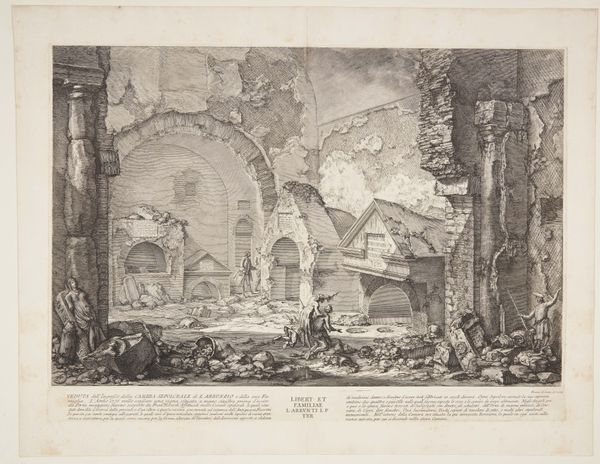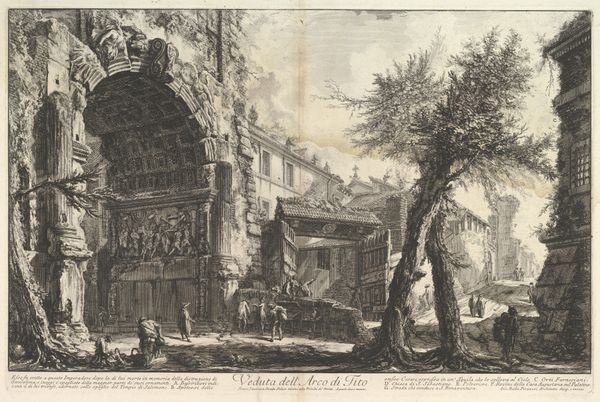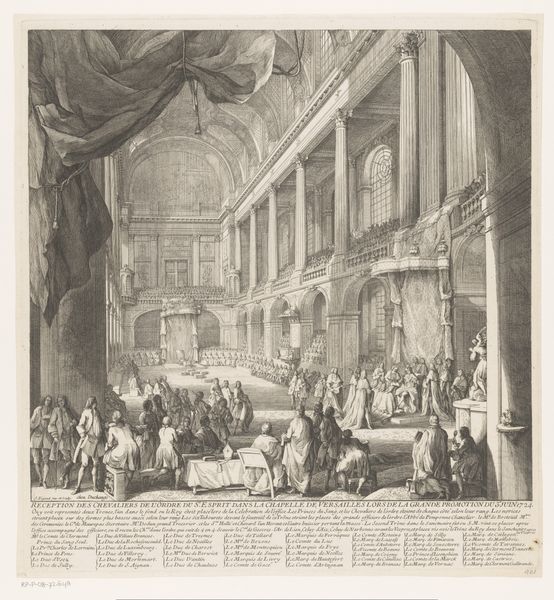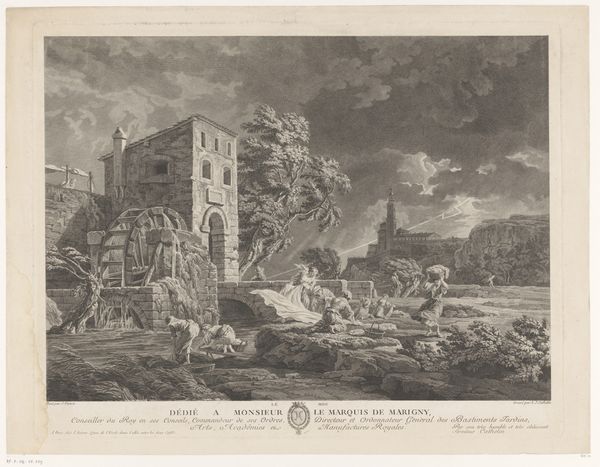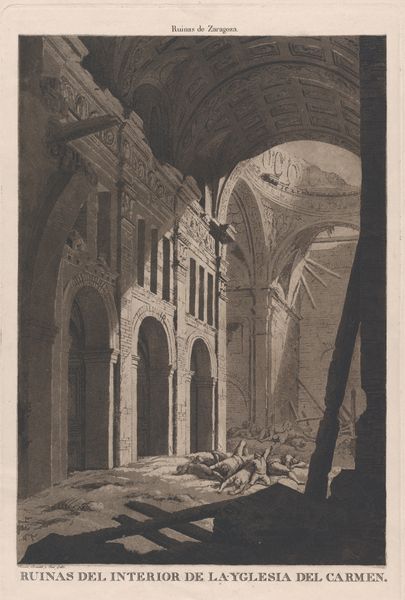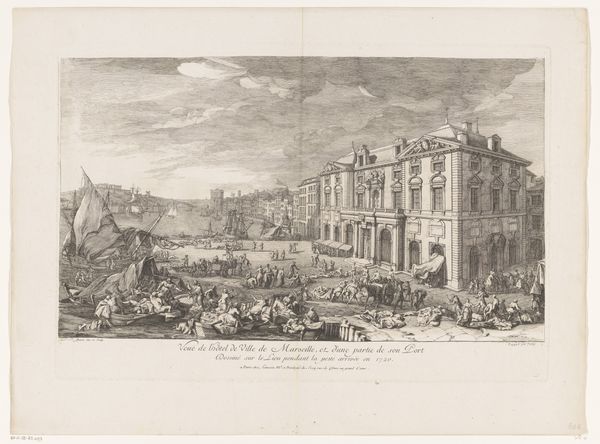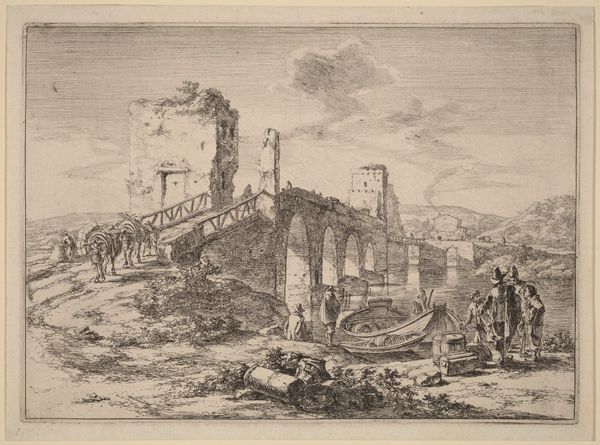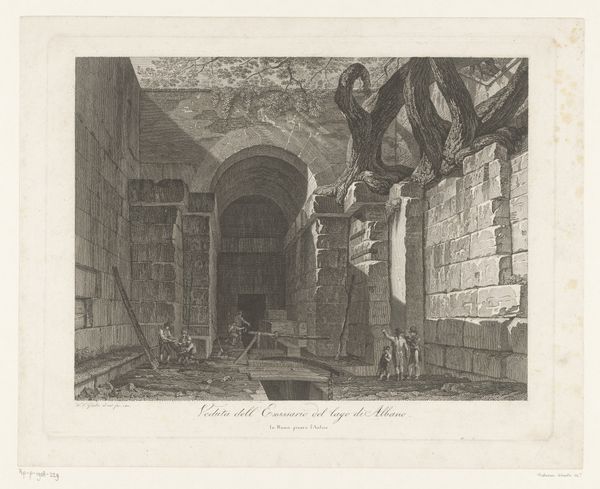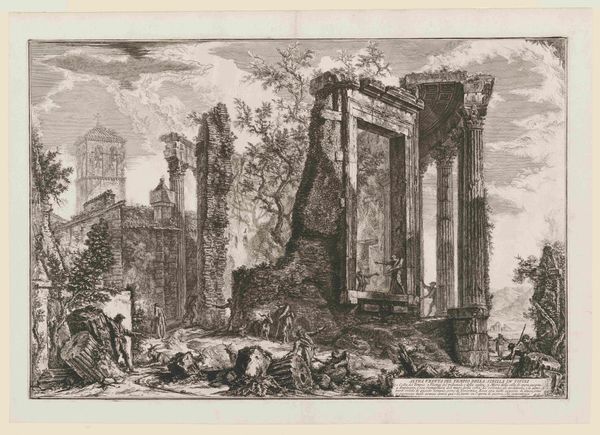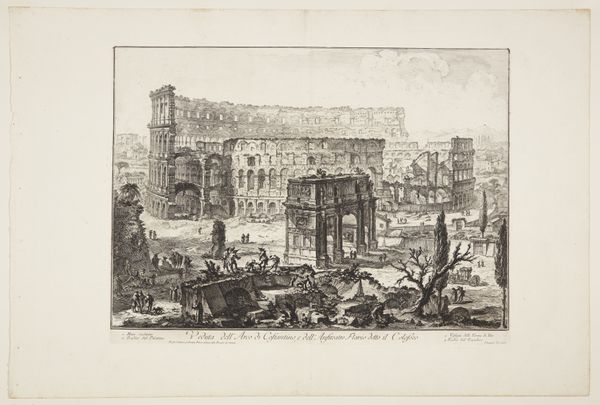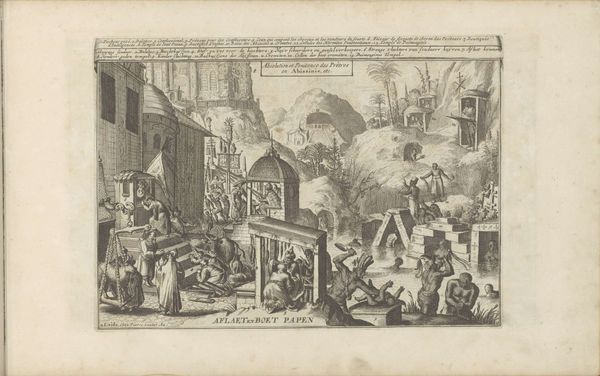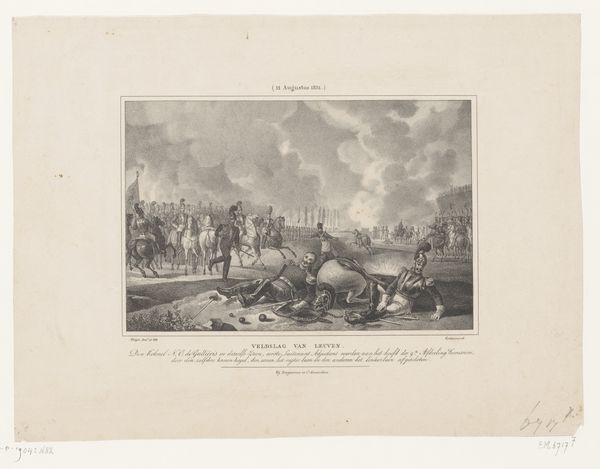
Interior view of three large tomb chambers thought to belong to the Household of Augustus 1754 - 1755
0:00
0:00
print, etching, engraving, architecture
#
neoclacissism
# print
#
etching
#
history-painting
#
engraving
#
architecture
Dimensions: 510 mm (height) x 590 mm (width) (bladmaal), 375 mm (height) x 515 mm (width) (billedmaal)
Editor: This etching, "Interior view of three large tomb chambers thought to belong to the Household of Augustus" by Giovanni Battista Piranesi, dates to around 1754-1755. The sheer scale of the space, rendered in such intricate detail, is what grabs me initially. It’s both impressive and slightly unsettling. What historical forces might have shaped Piranesi’s vision here? Curator: A fascinating question. Piranesi’s work needs to be understood in the context of 18th-century antiquarianism and the Grand Tour. Roman ruins, particularly, were potent symbols of past glory, attracting travelers, artists, and intellectuals alike. Piranesi wasn't just documenting these sites, but actively participating in the construction of a particular vision of Roman grandeur, influenced by the prevailing Neoclassical fascination with antiquity. Editor: So, it's not necessarily about historical accuracy, but a constructed image? Curator: Precisely! Consider how museums and collections often functioned then and even now: shaping perceptions and reinforcing particular narratives about power and heritage. The scale, as you noted, is important. He amplifies the monumentality, potentially exaggerating it for dramatic effect. What political message do you think that projection might convey? Editor: Maybe it is intended to evoke awe or even intimidation through scale, emphasizing the power of the past empire, perhaps as a subtle commentary on contemporary power structures? Curator: Exactly! And notice how Piranesi includes figures in his etchings. What do you make of their presence? Editor: It emphasizes the cavernous space, making us as viewers feel quite small, perhaps insignificant compared to this grand historical narrative. And if those people were performing restorative maintenance on the chambers it's quite politically loaded. Curator: Indeed. Through carefully chosen viewpoints, dramatic lighting, and even the inclusion of those figures, Piranesi invites us to contemplate the relationship between past and present and the socio-political implications inherent in how we interpret and display history. Editor: It is fascinating to see how history painting plays into political messaging. I see now how cultural context is everything to properly interpret the artwork.
Comments
No comments
Be the first to comment and join the conversation on the ultimate creative platform.
